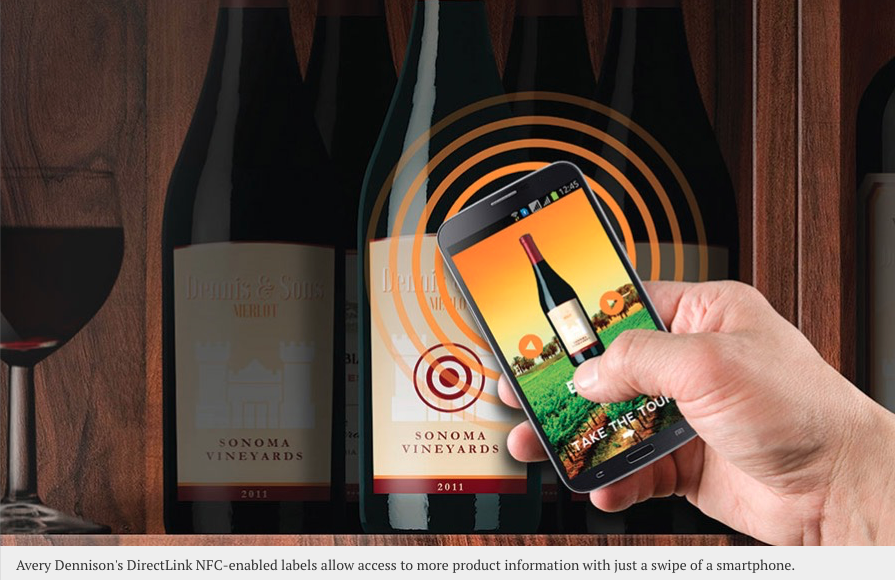
Earlier this year, Mary Greenwood — the director of new technology and business development, materials group, Avery Dennison — had to purchase a new washing machine for her home. After making her selection and arranging for it to be delivered, she was surprised upon the appliance’s arrival to see a small image of a smartphone on the machine. Naturally, Greenwood took her phone and held it up to the image on the machine. From there, she was prompted to download an app, which enables her to now start her washing machine from anywhere in the world. The app also allows her to access the machine’s user manual.
“Really, what (the manufacturer) wanted to do was continue to communicate with the customer,” she says.
While a washing machine sticker might not have much to do with packaging, Greenwood’s experience is a prime example of what brands are increasingly attempting to accomplish with smart label packaging — keeping in touch with the consumer beyond the store.
“There are a number of different uses for smart packaging,” says Greenwood, who defines “smart labels” as any type of label with technology that can extend the functionality and/or content of labels or packaging beyond traditional print means. “It can be NFC (near field communication) and that’s a microchip. A consumer just has to hold their phone close to the package and that brand could deliver any kind of digital content. NFC can do that, image recognition can also do that, a QR code can do that. But there are differences in those technologies.”
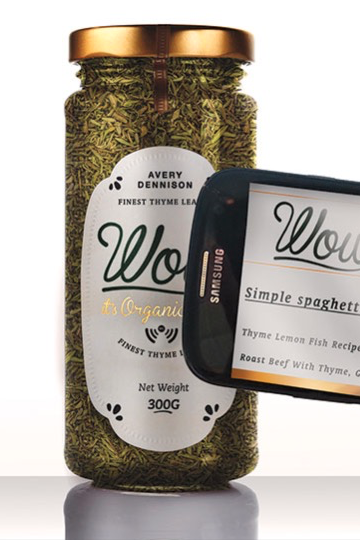
With NFC, for instance, usually an app isn’t required for the phone. Greenwood says most phones these days include software to accommodate NFC and estimates that some 1.2 billion NFC-enabled smartphones will be shipped by 2018. Image recognition and QR codes offer the same type of data access, but usually require consumers to download an app to access it via these means. Another smart label technology gaining momentum is sensors and microchips.
“There are a lot of time and temperature sensors and data loggers in the marketplace today,” Greenwood says. “Because of the way sensors and microchips have gotten so small, you can now incorporate that technology into something that’s the size of a label or as thin as a label.
“There are so many different things that are being developed, particularly around the microchips and sensors. Someday, you could see that food companies could guarantee freshness and quality all the way from farm to table.”
Greenwood says Avery Dennison has an increased focus on directly connecting to the consumer, an initiative that is evidenced by a recent project with natural cosmetics company Mineral Fusion. Avery Dennison’s DirectLink NFC-enabled labels were placed on Mineral Fusion’s 2015 cosmetic collection products that were delivered to Whole Foods stores. With just the swipe of a smartphone over the label, consumers were able to access video content about the products. While this particular application was with paper labels, Greenwood says that many companies are testing NFC — and other technologies such as image recognition and QR codes — to figure out the best ways to utilize it, when it comes to both paper and film labels.
“You use NFC in everyday life and don’t even know it,” she says. “If you use card access to a building, you’re using NFC. What (we’ve) been focused on is that direct connection to the consumer. How do I connect to that consumer? How do I get close to that consumer directly from my packaging? It’s a way to continue messaging after you bring the product home.”
Greenwood says it’s fair to classify smart labels as still in the “elementary phase” of development, and one big reason why is due to awareness.
“I don’t know if you remember when QR codes came out, people were going ‘what are those?’” she recalls. “The awareness is going to come — just how soon?
“I really think it’s going to take packaging to a new level.”
Avery Dennison
(626) 304-2000
www.averydennison.com
[ add comment ] ( 66 views ) | permalink |




 ( 3.1 / 1866 )
( 3.1 / 1866 )
In his latest book, The Evolution of Everything, Matt Ridley argues that social engineering policies, whether initiated by governments or some other organization, are unlikely to reach whatever dedicated goal they have because ultimately it is the action of humans that change society and not the ideas of a select group of people.
In front of a packed crowd at the Cato Institute on Wednesday, Ridley riveted the audience by describing how the evolution of human society and technological innovation is the result of our collective human action, not human design.
Ridley cited a number of historical instances of the failures of social engineering, such as China’s one-child policy. In the ten years prior to China’s one-child policy there was a greater decrease in the population than in the ten years during which the one-child policy was in place.
Another example is the English language. The rules in the language were not designed by some English language authority, but rather evolved and emerged from a constant interaction amongst humans adding and subtracting from the language they are using to communicate. He did not mention that the French language is far more controlled, with the Academie Française in charge of approving new words.
Ridley’s main focus in his new work is technological innovation. Innovation in general, whether technological or cultural, is merely a combination and recombination of existing things. It is through unplanned recombination efforts that we see our greatest innovations.
The most prominent example of technological innovation through human action is the Internet, according to Ridley. Instead of being meticulously planned by the government, the Internet arose from ordinary people using networks to pass information and ideas and eventually grew into what it is today. Most of the protocols that are now used on the Internet were developed on peer-to-peer networks and eventually became standard.
Ridley compared this natural technological evolution to the evolution that takes place in human genes. The evolution that takes place naturally in human genes without any design or designer is the same form as the technological evolution we see in the world. Just as there is no designer in human evolution, there is no designer in technological and societal evolution.
With this understanding of evolution in place, Ridley is optimistic about the direction technology and society are headed. He believes that technology will continue to advance and create higher living standards for the majority of people and our cultural norms will continue to adapt in a positive way.
However, there is some cause for concern amongst Ridley’s optimism. He argues that there are too many people in the world that refuse to recognize that evolution is what changes our society. Without evidence, people cling to the idea that a planned society and economy is what is needed, not an organic one. Society emerges, he argues, from a vast amount of human interaction and ingenuity, not from someone ruling over them and telling them what to do.
The key aspect to all innovation and evolution, according to Ridley, is trial and error. It is the feedback from our behavior in the trial and error process that allows society to realize right from wrong in cultural rules and technological advancements. This trial and error process, as Ridley meticulously argued, can most effectively be done through the organic interactions in a society.
Ridley encouraged the audience to be skeptical of top-down approaches that are advocated by government and special interest groups. Instead, everyone should be focused on the bottom-up approaches that have resulted in the explosion of technological innovation the world has seen recently. It is through the bottom-up approach that America and the rest of the world will experience the most prosperous technological evolution.
[ add comment ] ( 58 views ) | permalink |




 ( 3 / 1385 )
( 3 / 1385 )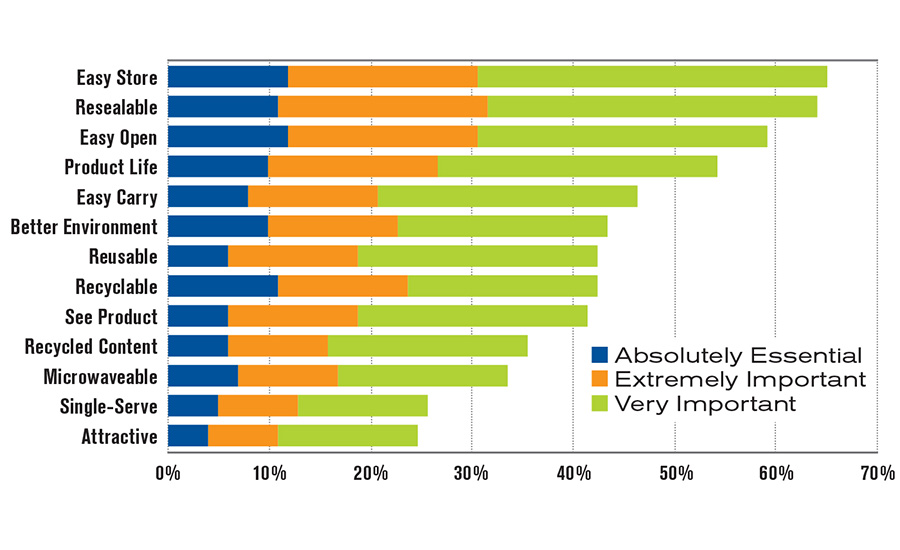
How much does packaging drive brand owner and consumer purchase decisions?
A new FPA Brand Value study says it has a significant impact on brand owners and that flexible packaging aligns well with today’s marketplace trends.
Here are three central factors that emerge from the study presented at FPA’s Fall Executive Conference:
1. 80% of brand owners say that packaging has a positive impact on brand value.
2. Consumers will pay significantly more for certain product attributes enhanced by flexible packaging.
3. Flexible packaging delivers what tomorrow’s consumers expect, and 97% of brand owners who use flexible packaging today intend to use the same amount or more in coming years.
The study comes from Gibbs-rbb, a strategic communications consulting firm.
They integrated data from consumers, brand owners and flexible packaging suppliers to point out places where flexibles offer an advantage. Jeff Altheide, principle with Gibbs-rbb, presented the results.
Findings showed how well consumer and brand owners match in their assessment of consumer packaging needs. (Figure 1. shows consumer data.)
A Harris poll produced the consumer data, and a survey by Packaging World magazine produced the brand owner data.
Both groups agreed that being “resealable,” being “easy to open,” and “extending product life” are among the top five attributes that packaging should deliver.
Consumers said that “easy-to-store” and “easy-to-carry” were also top considerations.
Brand owners put “able to see product” and “attractive packaging” among their top-five attributes.
Willing to Pay More
The Harris survey also reported that consumers are willing to pay more for package attributes. Data shows that, on average, consumers are willing to pay 14% more for packaging that is “resealable,” while they would pay 9% more for “single-serve” packages.
Jeff Altheide cautioned that there are significant demographic differences in the “pay more” data.
For example, 68% of millenials would pay more for “ability to recycle.” However, only 47% of consumers 65 and older would pay more for that attribute.
Some 70% of parents would pay more for an “easy to store” package, yet only 53% of those with no children would pay a premium for that feature.
One the business side, the Packaging World survey of brand owners shows that 66% of the companies responding would be using more flexible packaging in the next five years than they are today; 31% say they would be using the same amount.
Two percent would be using less.
Source : Flexible Packaging Association
[ add comment ] ( 69 views ) | permalink |




 ( 3 / 1885 )
( 3 / 1885 )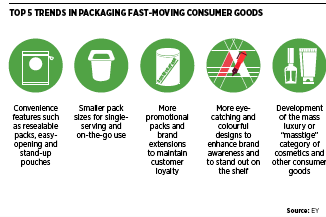
Packaging is a deceptive Industry.
Your man on the clapham omnibus could well assume It to be all cardboard boxes and bubble wrap, is there any Innovation? To which the Industry can reply: are you kidding?
Packaging is a sector valued around $800 billion - and It rivals Silicon valley for Innovation.
One huge story right now is the revolution in medical packaging, triggered by new European union rules.
The Falsified Medicines Directive demands every pack of pharmaceuticals be given unique serial numbers, known as serialisation, until recently the packs needed only expiration dates and batch numbers.
This is a whole new ball game.
Craig Stoble. head of the life sciences team at Domino Printing Sciences, calls the EU directive "potentially the most significant technical and logistical challenge that manufacturers have faced in decades".
The deadline for compliance is 2019. Mr Stoble and his crew have been working flat out to create Industry-grade serialisation processes.
Its not easy.” At Its most basic level, this has involved many manufacturers jettisoning older coding equipment simply not capable of applying a unique code to each Item." he says.
"In 2011. when the directive was published.
Domino Printing sciences estimated that as much , as 70 per cent of Installed equipment would become obsolete In the context of serialisation.”
Packs will need to be redesigned. New Inks developed. "For Ink-based coding methods, such as thermal Ink jet, legibility has been significantly enhanced by the development of new inks that produce clear, high-contrast and durable codes that will last for the lifetime of the product." says Mr Stoble. "This. too, is a new requirement, since codes must now be able to be verified not just In the manufacturing plant, but right through to the point of sale or dispensing.”
The incentive for mastering serialisation ls huge. The EU directive matches similar moves in Brazil , Argentina, South Korea and China, and the United States has announced its Drug Quality and security Bill.
Further, it is likely that serialisation, when proved to deter counterfeiting. will be implemented in other sectors, such as luxury goods and food.
Here's another fast-growing technology - modified air packaging or MAP.
When food and vegetables are picked they start to deteriorate. "Microbes flourish, turning ripe courgettes and carrots into a slushy, mouldy mess, some microbes depend on oxygen.
These include pseudomonas. acinetobacter and moraxella. which spoil food, giving it a bad taste and odour. The answer is to pack food with oxygen-free gases, when bacteria can't grow, the food ls preserved for much longer.
How much longer? Linde Gases, a pioneer in the field, calculates raw red meat can be extended from two to four days to between five and eight. Raw poultry can be extended by triple the normal span; sandwiches from three to ten days.
The question is which gases to use. Linde Gases advocates varying mixtures, depending, on the food stuffs, some require nitrous oxide, argon or hydrogen. Others recommend a more traditional mix of carbon dioxide, nitrogen and even some a tiny dose of oxygen (1 to 2 per cent at most down from 20.95 per cent in the atmosphere). Carbon dioxide is effective at inhibiting microbes, but absorbs into the food's liquid and fat. reducing its pH value.
It can also cause changes impermeability and texture. Dairy brands are keen to improve duration.
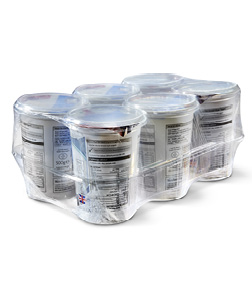
Dale Farm, one of the UK’s major dairy co-ops. identified a major problem with its packaging.
Traditional heat-shrink-wrap heat-tunnel machines. used to package yoghurts and “crème flache" for transport, generated a lot of heat . The machinery became so hot, the whole dairy was hard to work in. Not good.
The solution was heatless shrink-wrap machines made by TrakRap. This eliminated the problem completely and improved the eco-performance of the process. without a heating bill, Dale Farm cut electricity usage for pack wrapping by 95 per cent a year. The film used by TrakRap is 100 percent recyclable and so thin that 68 percent less material could be used. For a major national brand such as Dale Fami, an Innovation like this makes a serious contribution to Its long-term prospects.
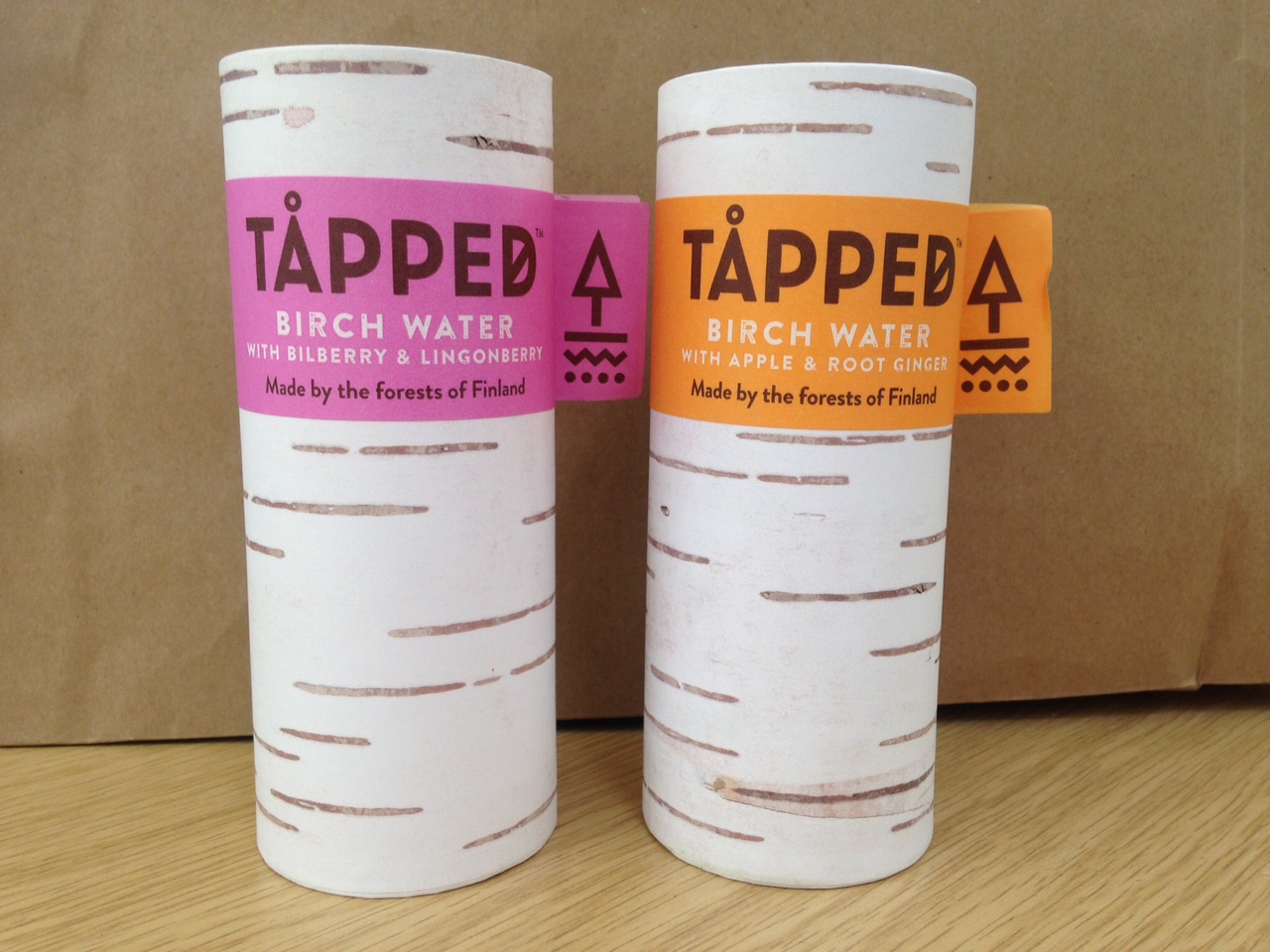
One final Innovation.
Birch water is a traditional drink In Finland and a new brand has just been launched in the UK called Tapped. Birch Water is a curious beverage. It’s made from the sap of the birch tree, tapped once a fortnight. The liquid is high in manganese, zinc, iron and other minerals.
A product like this needs special packaging to Impress potential customers. so the executives at Tapped asked creative agency Horse to come up with something fitting. The result is an aseptic “lamican" pack, made of 75 per cent wood. It gives the product a shelf life of 12 months; and Horse claim the material has 12 percent of CO2 emissions compared with aluminium and 19 per cent that of plastic.
"Although a traditional spring-time drink In Finland and other parts of the world such as Canada, tree waters are a totally new concept to consumers In the UK." says Ian Firth, creative partner at Horse. "Clarity of product communication was therefore paramount, so we used the packaging structure to our advantage. To help communicate provenance, the water is packaged in a cylindrical paperboard can, which we designed to resemble a real birch tree. This helps overcome some of the challenges of communicating an unusual new product, but equally distinguishes the water from other beverages.”
Will it sell? Various fashion industry magazines have called Birch Water the new “super food”. If does take off, packaging industry will, as usual, have played a vital role.
Racounter.net
Future of Packaging
Edit by Charles Orton Jones
[ add comment ] ( 64 views ) | permalink |




 ( 3.1 / 2005 )
( 3.1 / 2005 )Stick packs are among the hottest trends in unit-dose flexible packaging
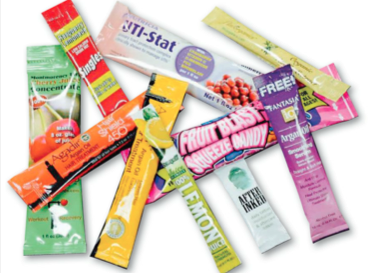
It may have taken over 15 years but stick packs have now become an accepted and desired form of packaging for single-dose applications of products.
Stick packs provide a user-friendly application of single-serve products in an attractive tamper-evident package.
They’re great for products you need to travel with or have available with you all the times.
It’s fairly common in the course of a day to experience the convenience of a product filled in stick pack.
Your first cup of coffee today may have been made using a stick pack containing Starbucks VIA instant coffee. When you got to the mall, someone may have handed you a sample of skin moisturizing lotion in a stick pack as you passed thier kiosk.
You may have proceeded to the nutrition store to purchase some nutritional supplements and were pleased to see that these products were now being sold in stick packs.
At your next stop, while picking up some hair and personal care products, you may have helped yourself to some free samples of Agadir hair treatments and After inked tattoo moisturizer packaged in stick packs.
On the way to your car, you purchased a bottle of water and procceeded to open a stick pack of rasperry lemonade singles to pour into it.
You may have then proceeded to the drug store where you purchased a box of your favorite migraine cure, which contained eigth stick packs of sublinngual pain medicine.
Upon arriving home, you may have treated yourself to a hot cup of tea with lemon juice from a stick pack you just opened.
Whether it is sugar or sweeteners, flavored drink concentrates, over-the-counter drugs or samples of new cosmetics or personal care products, stick packs are now established in the market place.
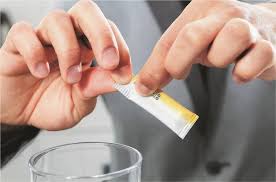
And they’re here to stay. As you may know, stick packs originated in Japan and became hottest trends in unit-dose flexible packaging.
The availability of stick packs to meet growing markets has been made possible by state-of-the-art equipment, a diversified supply chain of flexible structures and contract packagers providing increased filling capacity.
Faster machines ami improved printed structures have allowed fillers to provide the stick pack as an economic single-serve solution and a more environmentally friendly option than alternative packaging.
Along the lines of the latter eco-friendly point, stick packs require, less material to fabricate than rigid alternatives, thereby requiring fewer shipments of product and taking up less space in landfills after hey're discarded.
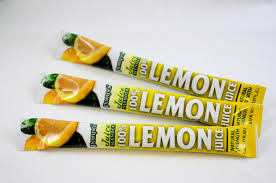
[ add comment ] ( 221 views ) | permalink |




 ( 3 / 509 )
( 3 / 509 )

 Calendar
Calendar